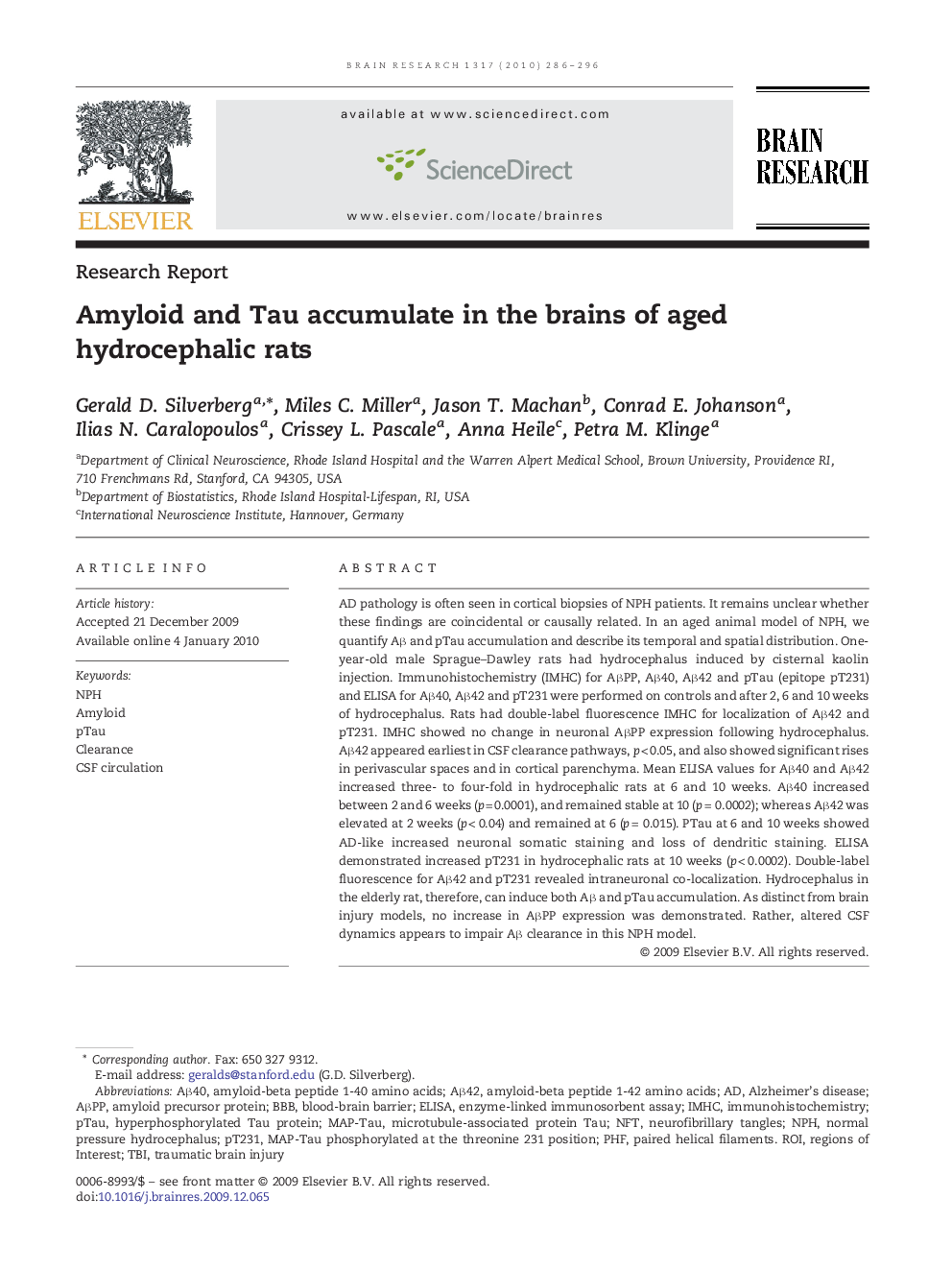| Article ID | Journal | Published Year | Pages | File Type |
|---|---|---|---|---|
| 4327447 | Brain Research | 2010 | 11 Pages |
AD pathology is often seen in cortical biopsies of NPH patients. It remains unclear whether these findings are coincidental or causally related. In an aged animal model of NPH, we quantify Aβ and pTau accumulation and describe its temporal and spatial distribution. One-year-old male Sprague–Dawley rats had hydrocephalus induced by cisternal kaolin injection. Immunohistochemistry (IMHC) for AβPP, Aβ40, Aβ42 and pTau (epitope pT231) and ELISA for Aβ40, Aβ42 and pT231 were performed on controls and after 2, 6 and 10 weeks of hydrocephalus. Rats had double-label fluorescence IMHC for localization of Aβ42 and pT231. IMHC showed no change in neuronal AβPP expression following hydrocephalus. Aβ42 appeared earliest in CSF clearance pathways, p < 0.05, and also showed significant rises in perivascular spaces and in cortical parenchyma. Mean ELISA values for Aβ40 and Aβ42 increased three- to four-fold in hydrocephalic rats at 6 and 10 weeks. Aβ40 increased between 2 and 6 weeks (p = 0.0001), and remained stable at 10 (p = 0.0002); whereas Aβ42 was elevated at 2 weeks (p < 0.04) and remained at 6 (p = 0.015). PTau at 6 and 10 weeks showed AD-like increased neuronal somatic staining and loss of dendritic staining. ELISA demonstrated increased pT231 in hydrocephalic rats at 10 weeks (p < 0.0002). Double-label fluorescence for Aβ42 and pT231 revealed intraneuronal co-localization. Hydrocephalus in the elderly rat, therefore, can induce both Aβ and pTau accumulation. As distinct from brain injury models, no increase in AβPP expression was demonstrated. Rather, altered CSF dynamics appears to impair Aβ clearance in this NPH model.
